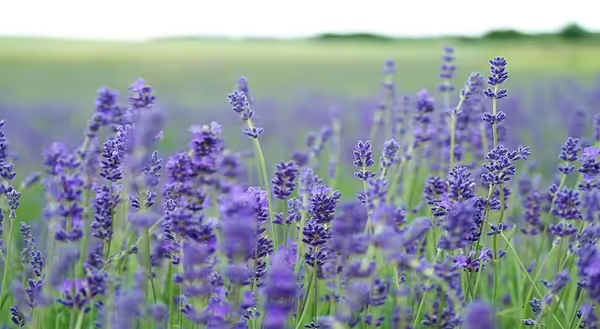
The soothing floral fragrance of lavender is easily recognized in any garden. Its silvery, serrated foliage and bluish-purple flowers both contain scented oil glands, making it uniquely fragrant. Bees and other pollinators are attracted to the floral scent and prominent levels of nectar in the flowers. Include lavender in your garden or on a patio to enhance your outdoor space with its vibrant hues, unique texture, and delightful scent.
Although there are several species of lavender grown in the world, the most popular is English lavender (Lavandula angustifolia). When growing it, a few basic requirements must be followed to ensure it stays healthy and overwinters (USDA Zones 5-8): Lavender requires full sun (8 hours each day) and well-drained soil. Don’t let poorly drained soil stop you from growing this magnificent plant though; lavender can be easily grown in containers and raised beds with a potting soil mix that does not contain added fertilizer. This way, it can be grown as an annual that you discard at the end of the growing season or a perennial that you bring indoors during the winter months.
Timely pruning of lavender ensures a compact and tidy shape while increasing flower production. In the spring, prune the plant when the new growth appears, cutting dead stems down to the first set of green leaves. After flowering, prune lavender again to keep its compact shape by removing 1/3 to 1/2 of the plant. This second pruning may encourage the plant to bloom again. When pruning, do not cut below the leafless wood, as it will not regrow. English lavender will grow to 1.5 to 2 feet tall.
Newly planted lavender should be watered regularly in the first year. Once established, lavender is drought-tolerant and should only be watered when the soil dries out. When growing lavender, added fertilizer is not necessary as it can cause excessive foliage growth and a decline in flower blooms.
The best part of growing lavender is the wonderfully scented blooms. Enjoy the fragrance in the garden or harvest the stems to use. Dried lavender flowers can be used in a variety of ways, including sachets, potpourri, crafts, and even in delicious recipes. For optimum quality and scent, cut flower stalks when the blooms are about to open. To dry, lay flat or hang cut flower stalks in a cool, dry place. Dried lavender leaves are also edible and have a strong flavor, so they can replace lavender flowers in many recipes.
With feathery foliage and a soothing scent, lavender is an exceptional plant choice for a sensory garden. Sensory gardens, designed to stimulate the five senses, encourage interaction with plants through touch, smell, sight, sound, and taste. Studies show these gardens are calming and beneficial for adults and children with sensory challenges.